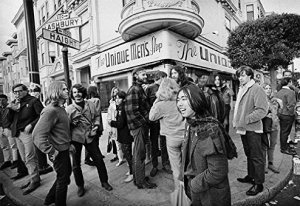In the first half of the twentieth century, the 18th & Vine District was the thriving African-American community in segregated Kansas City. Just east of the main downtown, the area was a self-contained neighborhood of myriad black-owned businesses. The south edge of the area was residential; clubs and theatres clustered on the north.
Charlie Parker, Count Basie, Lester Young, Joe Turner are among the many jazz and blues performers who built their reputations in Kansas City.
 The Kansas City Monarchs, a mainstay of the Negro Baseball League, drew crowds to its games until the arrival from Philadelphia of the major-league Athletics (now in Oakland, and trying to move to Santa Clara.) The 2015 World Series champion Royals make their home in Kansas City.
The Kansas City Monarchs, a mainstay of the Negro Baseball League, drew crowds to its games until the arrival from Philadelphia of the major-league Athletics (now in Oakland, and trying to move to Santa Clara.) The 2015 World Series champion Royals make their home in Kansas City.
Arthur Bryant’s, once named by Calvin Trillin as the best restaurant in America, and categorized by Jane and Michael Stern in Roadfood as “Legendary – worth driving from anywhere,” (and described as having “all the decorative charm of a bus station”) still sells its smoked meats and lard-infused sauce from its close-by location.
 The end of Jim Crow shopping dispersed customers from the 18th & Vine neighborhood. As in other cities, so-called urban renewal bulldozed much of the area. The district is trying to make a comeback. The American Jazz Museum and the Negro Baseball Leagues Museum are must-sees. The city belatedly recognized the historical significance of 18th & Vine and is promoting a more clear-headed redevelopment, but so far, with mixed success.
The end of Jim Crow shopping dispersed customers from the 18th & Vine neighborhood. As in other cities, so-called urban renewal bulldozed much of the area. The district is trying to make a comeback. The American Jazz Museum and the Negro Baseball Leagues Museum are must-sees. The city belatedly recognized the historical significance of 18th & Vine and is promoting a more clear-headed redevelopment, but so far, with mixed success.















